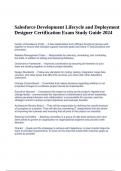Essay
Frankenstein by Mary Shelly Full Essay Theme/Analysis: Intolerance, Language Analysis & Context
English Literature - Pearson Edexcel - Prose Frankenstein by Mary Shelly Full Essay Theme/Analysis: Intolerance / Rejection / Prejudice AO1, AO2 & A03 Language Analysis & Context
[Show more]













